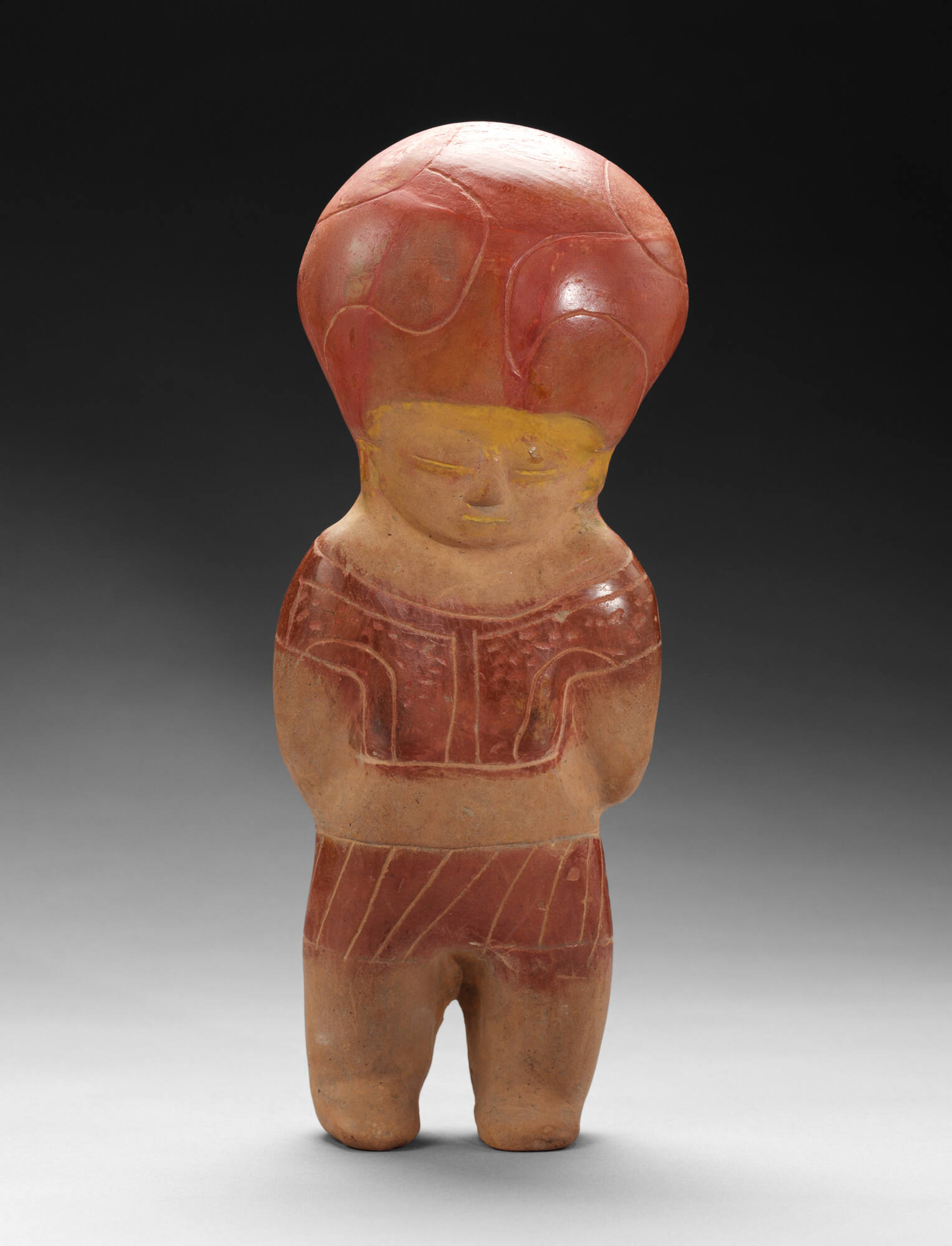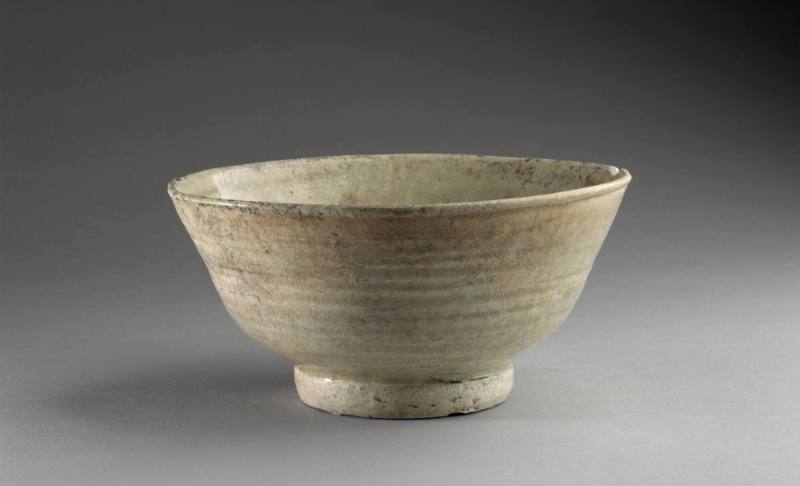
Object Details
Culture
Chorrera (Ecuador)
Date
1100–300 BCE
Medium
Earthenware
Dimensions
11 × 4 1/8 × 1 7/8 inches (28 × 10.5 × 4.8 cm)
Credit Line
Gift of Thomas Carroll, PhD 1951
Object
Number
2006.070.021
BRIEF DESCRIPTIONThis is a Chorrera ceramic figure of a standing female.WHERE WAS IT MADE?This figur(…)
BRIEF DESCRIPTIONThis is a Chorrera ceramic figure of a standing female.WHERE WAS IT MADE?This figurine was made in the coastal region of what is now Ecuador.HOW WAS IT MADE?This figure was made using a mold, a method that allowed potters to make multiple copies of one figure. After making the initial form, the piece could be customized with color and incised decorations.She wears a large, broad helmet or headdress painted in red-orange slip, burnished dark red slip shirt, and burnished red slip skirt. Slip is made of different colors of clay and minerals mixed with water. After the slip was applied and allowed to dry, the surface was burnished (rubbed to a high polish) with a stone. Then the vessel was fired in an earthen pit. The incised lines on the helmet, shirt and skirt may have been scratched on after firing. Looking at the face of figure, you can see traces of matte yellow paint, also applied after firing.HOW WAS IT USED?The original function of archaeological figurines found in museum collections is uncertain. Today archeologists carefully record information about the associations between artifacts and the circumstances of their burial as they are unearthed, and we can draw many conclusions about object function. However, very few of the archaeological objects found in museums today were excavated in a careful, scientific manner, so we have fewer clues about their past associations and function.A wide range of people and objects are shown in pre-Columbian pottery. From burials, we know that the variety of head shapes, jewelry, and clothing styles reflect the actual appearance of these prehistoric people. Because figurines represent many life stages and ordinary human activities, they probably served to exemplify the usual norms of behavior, to serve as guidelines or rules to help socialize people and integrate them into society. Although obviously decorative, figurines could also have been used to make offerings to supernatural powers, to serve as good luck charms, or to accompany the dead as grave goods.WHY DOES IT LOOK LIKE THIS?This figure has the body proportions of a typical female Chorrera figure. Notice how the facial features are small, except for the large closed eyes with heavy, defined eyelids. The headdress seems to be a helmet-like turban and flares widely out from the face, giving the head a rounded triangular shape perhaps indicating cranial deformation. To see two similar Chorrera figures in the Johnson Museum’s collection, search for object numbers 2006.070.019 and 2006.070.020 in the keyword search box.Manipulation of head shapes was common throughout Mesoamerica and South America in pre-Columbian times. Human head shapes can be deformed or changed in infancy, since the skull is relatively soft. Common pre-Columbian head shapes were produced by tightly circling the baby’s head with cloths (to produce an annular or tall rounded shape), or by tying boards or other hard objects to the back of the head and/or the forehead (to produce a broad, flat shape). Differences in head shape served to mark geographic origins or group affiliation. In the Andes today, hats are used in a similar way, with each community having characteristic headgear distinct from those worn in neighboring areas.ABOUT THE CHORRERA CULTURE:The Chorrera culture’s extended sphere of influence incorporated all three major Ecuadorian ecological zones: the coast, sierra (mountains), and Amazonia. While the Chorrera culture had its origins in the earlier Machalilla culture of the coast, certain aspects of its ceramic technology may have been influenced by the Ocós culture of Mesoamerica. The Chorrera people lived in small communities of 100-120 people, which seem to have supported craft specialists despite their small size. Fishing and farming were distinct occupations. The economy of the Chorrera people was based on farming, hunting and gathering. Trade along rivers and over the sea, especially trade in valuable stones such as lapiz lazuli, obsidian, and rock crystal, played an important role in the florescence of this culture. The highly burnished redware ceramics were decorated with black resist decoration, and feature an assortment of naturalistic animals and stylized human figures. Whistling bottles make their appearance during this period. The first cultural horizon in Ecuador to be widespread over a relatively large geographic region, the Chorrera people laid down a common cultural foundation upon which later cultures were built.












